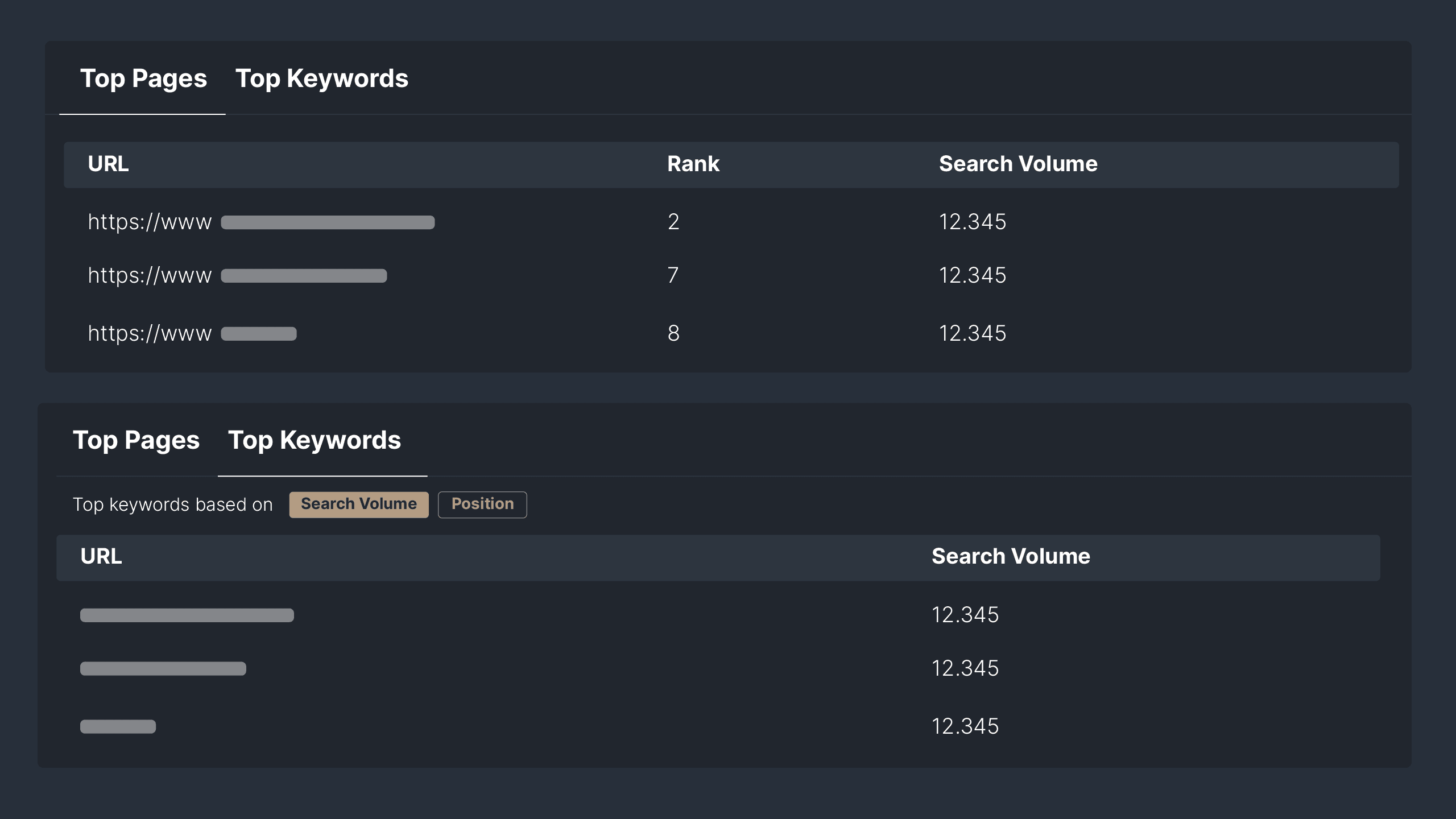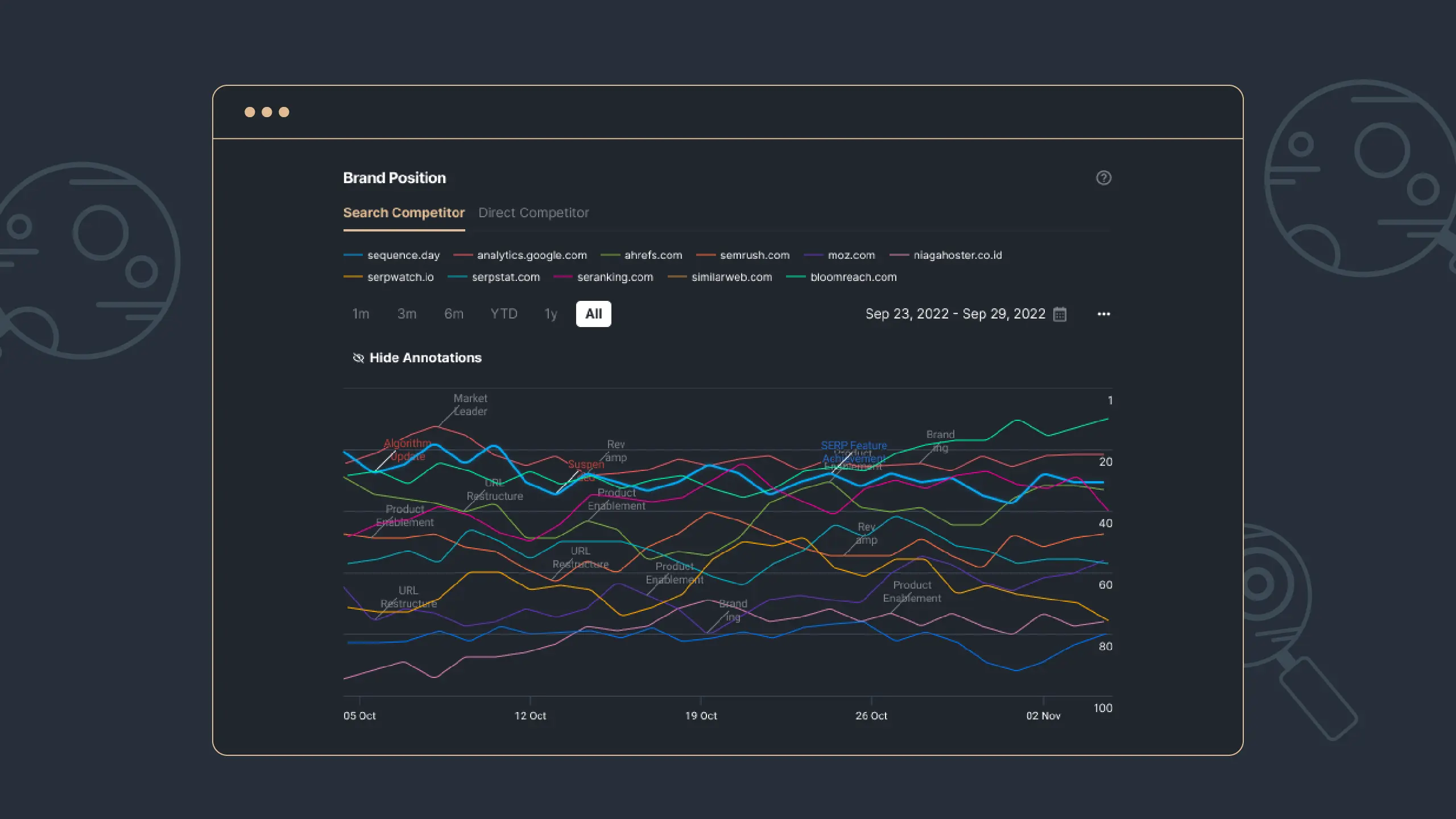Competitor analysis is a cornerstone of a successful business strategy. It provides invaluable insights into your business landscape, helping you make informed decisions that can lead to growth and market dominance.
However, finding the right competitor can be a challenge since there are many considerations. In this article, we will show you how to find your competitor using Sequence Stats and then proceed to dive into their strengths and weaknesses.
Identifying Your Competitors
Before knowing how to find competitors, you should understand the competitor types that are worth watching to improve your strategy. In the realm of SEO and online competition, businesses often encounter two main types of competitors: direct competitors and indirect competitors.
These competitors play a significant role in shaping your digital strategy and online presence. Below is a glimpse of those competitors' types.
A. Direct Competitors
Direct competitors are businesses that offer similar products or services to yours and target the same audience. When users search for solutions that align with what your business offers, these competitors are likely to appear in search results alongside your business.
For instance, if your business sells high-end smartphones, your direct competitors might include other smartphone manufacturers targeting the same market segment. Analyzing direct competitors helps you understand how they position themselves, what keywords they target, and the strategies they employ to attract users' attention.
B. Indirect Competitors
Indirect competitors, on the other hand, might not offer the exact same products or services as your business, but they provide substitute solutions that fulfill similar needs. When users explore alternative options to solve their problems, these competitors become relevant.
Even if they are not directly competing with your business, identifying and analyzing indirect competitors is important because they can still divert potential customers away from your offerings.
Understanding both types of competitors allows you to develop a well-rounded SEO strategy. You not only need to differentiate yourself from direct competitors in terms of product quality and unique value but also need to address the factors that make indirect alternatives attractive to users.
How to Find Competitors Through Sequence Stats
Finding competitors should not be done manually since it will be time-consuming and ineffective. That is why, Sequence Stats can be a perfect tool to help you do that. With Sequence Stats, you can get the competitor list and start tracking their performance within a few clicks.
1. Suggesting Competitor Through Targeted Keyword
Sequence Stats provides a powerful tool for users to identify both direct and indirect competitors in their industry. With the Domain Watchlist feature, users can gain insights into who their competitors are based on the keywords they track.
When users input their target keyword into Sequence Stats, the platform not only displays their own performance metrics but also suggests a list of search competitors that are actively tracking the same keywords.

Picture 1: Competitor List under the Domain Watchlist feature
This functionality is particularly valuable as it helps users uncover competitors they might not have been aware of. These competitors might be vying for the same audience and online visibility, making it crucial to understand their strategies and performance.
2. Adding Competitors to the Domain Watchlist
Once users have identified their competitors, they can take advantage of the Domain Watchlist feature to keep a close eye on their activities. By adding these competitors to the watchlist, users can conveniently monitor their website performance over time.
The Domain Watchlist allows users to track various metrics related to their competitors, including their top-performing pages and the keywords driving traffic to their websites. This way, you can keep an eye on their search performance.

Picture 2: Top pages and Top keywords from the competitors.
3. Gaining The Statistics
In addition to the Domain Watchlist feature, Sequence Stats offers another powerful way for users to assess their site's performance in relation to their competitors using the Stats feature. This feature enables users to gain valuable insights into their brand's position in comparison to their competitors.
One of the standout metrics under the Stats feature is the "Brand Position." This metric provides users with a graphical representation of their brand's positioning relative to their competitors. It essentially showcases where the user's brand stands within the competitive landscape.

Picture 3: Brand Position visualization in Stats feature.
This visual representation is incredibly beneficial as it provides an intuitive and easily understandable way to grasp the nuances of competitive positioning.
Visualizing the brand's position enables users to see how well their strategies are working in relation to their competitors. It helps answer crucial questions such as whether the user's brand is gaining prominence, losing ground, or maintaining a steady position.
What Should Be Noted from Competitors
When observing competitors, there are several key points that should be carefully noted:
Strengths and Weaknesses: Analyze the strengths and weaknesses of your competitors. This includes aspects like their product quality, pages, keywords, pricing strategies, and marketing efforts.
Marketing and Messaging: Study your competitors' marketing tactics and messaging. What channels do they use? What kind of content resonates with their audience? This information can guide your own marketing strategies and help you reach your target audience effectively.
Online Presence: Evaluate their online presence, including their website, social media profiles, and search engine visibility. Understanding how they engage with customers online can provide insights into their digital strategy and audience engagement.
Customer Reviews and Feedback: Look into customer reviews and feedback about your competitors. What are customers praising or criticizing? This can highlight areas where your business can excel or offer a better experience.
Pricing Strategies: Understand how your competitors price their products or services. Are they offering discounts, bundles, or premium pricing? This can help you adjust your own pricing strategy to match or differentiate from theirs.
Market Trends: Stay updated on industry trends and shifts that impact your competitors. Are there changes in consumer preferences, technological advancements, or regulatory shifts that are affecting their business? Adapting to these trends can keep you ahead.
Conclusion
Armed with this knowledge, you can find ways to stand out, refine your strategies, and make your mark in a busy market. Remember, the goal isn't just to copy your competitors, but to learn from their successes and mistakes to shape your own success story.
Whether they're direct or indirect competitors, each one has something to teach, a challenge to offer, and a chance for you to grow. Use Sequence Stats to help you monitor your competitors' movement. Register now and enjoy the free trial!